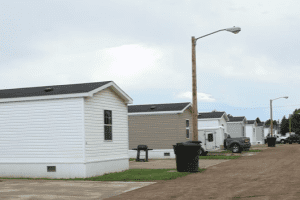
FEMA Trailer Formaldehyde Nightmare Likely To Haunt Residents. Although several agencies list formaldehyde as a likely carcinogen, there is no one standard for an acceptable level of exposure to this dangerous chemical. The Occupational Health and Safety Administration (OHSA); the Department of Housing and Urban Development; and the Centers for Disease Control and Prevention (CDC), through […]

FEMA Trailer Formaldehyde Nightmare Likely To Haunt Residents. Although several agencies list formaldehyde as a likely carcinogen, there is no one standard for an acceptable level of exposure to this dangerous chemical. The Occupational Health and Safety Administration (OHSA); the Department of Housing and Urban Development; and the Centers for Disease Control and Prevention (CDC), through its Agency for Toxic Substances and Disease Registry (ATSDR) have three different standards with the CDC’s set the far below the others.
Immediately following the Hurricane Katrina devastation, the Federal Emergency Management Agency (FEMA) ordered about $2.7 billion worth of trailers and mobile homes to house Katrina victims. FEMA’s requirements were detailed in a mere 25 lines, with minimal details regarding occupant safety. Today, industry and government experts say this is linked to a public health catastrophe involving 300,000 people, many children, who lived in Toxic FEMA Trailers and were—in many cases—exposed to high formaldehyde levels exceeding the CDC’s recommended 15-minute exposure limit for workers. Fifteen minutes is the limit at which acute health symptoms begin to appear in sensitive individuals.
In its March 2008 FEMA Trailer and Mobile Home Assessment, the CDC wrote that “there is no specific level of formaldehyde that separates “safe” from “dangerous.” While the CDC found that although levels of formaldehyde varied from unit to unit of a particular brand, nearly all brands of Toxic FEMA Trailers tested had units with high formaldehyde levels. Though it did not declare high levels of formaldehyde unsafe, the CDC “supported the need to move quickly,” and get people out of FEMA housing before summer, as heat can increase formaldehyde fumes.
Formaldehyde is an industrial chemical that can cause nasal cancer, may be linked to leukemia, and worsens asthma and respiratory problems. Within months of moving into the trailers, residents began complaining about unusual sickness; breathing problems; burning eyes, noses and throats, and even death. Formaldehyde is emitted from the resins and glues used in many construction components, including particleboard flooring, plywood wall panels, composite wood cabinets, and laminated countertops. Emissions are greatest in warm weather and when trailers are newly constructed.
Lindsay and Steve Huckabee and their four children—now aged two to 13—suffer from multiple, weekly nosebleeds, burning eyes, coughing, congestions, “colds” that don’t resolve, weekly doctor visits, and regular emergency room visits for years now. Lelah, six, and Michael, two, underwent surgeries over chronic breathing problems. The Huckabees’ apartment was flooded to the ceiling by Katrina. The family received a travel trailer in October 2005, then a mobile home in December 2005.
Today, the Huckabees are icons for a Sierra Club movement that believes the Toxic FEMA Trailers have caused widespread poisoning of Katrina victims. The Club tested 69 trailers; most—including he Huckabees’—tested. The Club is campaigning for stringent standards on formaldehyde levels in building products, such as glues, resins, particleboard, and insulation. Lindsay has testified before Congress twice—for the House Oversight Committee and the Committee for Science and Technology—about her family’s health issues while living in the Toxic FEMA Trailers.
Eight mobile home parks remain open and are scheduled for closure by year-end. The majority of the 6,400 families still in Toxic FEMA Trailers are on private land.
The personal injury attorneys at Parker Waichman LLP offer free, no-obligation case evaluations. For more information, fill out our online contact form or call 1-800-YOURLAWYER (1-800-968-7529).


